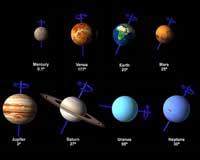 |
Blacksburg VA (SPX) Aug 31, 2009 Members of Virginia Tech's Space@VT research group are receiving a $2 million grant from the National Science Foundation (NSF) to build a chain of space weather instrument stations in Antarctica. Space weather affects a variety of everyday consumer technologies including global positioning systems (GPS), satellites for television reception, and cellular phones. Also, the understanding of space weather is critical to space programs. For example, "satellites experience the disruptive effects of energetic charged particles and electrical charging across the satellite structure during various weather conditions. Astronauts are vulnerable to energetic radiation that may occur at space station altitudes. Navigation signals from global positioning satellites are affected by irregularities in the ionosphere that develop under some conditions, and massive disruption in electric power distribution systems can be triggered by geomagnetic storms," explained Robert Clauer, professor of electrical and computer engineering (ECE) at Virginia Tech. Clauer is leading the team of researchers who include: Joseph Baker, assistant professor of ECE, Tamal Bose, professor of ECE, Brent Ledvina of Coherent Navigation, but who continues to hold an adjunct assistant professor of ECE position, and Majeid Manteghi, assistant professor of ECE. Bose is also the associate director of Wireless@Virginia Tech, a second Virginia Tech research group that is acting as a collaborator on this project. The northern hemisphere is already well-instrumented as a number of stations currently exist in the Arctic, including an array in Greenland. But due primarily to the "extreme Antarctic climate and lack of manned facilities with the necessary infrastructure to support facilities, the southern polar region is not," Clauer said. Data from the southern magnetic field is weaker than the northern magnetic polar field because its "magnetic dipole is offset from the center of the earth and tilted," Clauer, an expert in atmospheric sciences, explained. One of the most spectacular manifestations of the dynamic Sun-earth environment or space weather is the aurora borealis in the northern hemisphere and aurora austrialis in the southern Polar Regions. "Since the space age, we now understand these phenomena to be specifically related to the processes of the electric and plasma dynamic environment that exists around the Earth, and these processes result from interactions between the solar wind and the Earth's magnetosphere," Clauer added. Today, the science of space plasma physics has matured, but the goal remains for scientists and engineers to accurately predict the properties of space weather, and this is also the goal of the National Space Weather Program. Space weather refers to the conditions on the sun and in the solar wind, magnetosphere, ionosphere, and thermosphere that can influence the reliability of space borne and ground-based technology or which can endanger human life or health. Clauer's office is physically located at the National Institute of Aerospace (NIA), a consortium of universities established in 2002 to develop excellence in research and education in a spectrum of aerospace related areas of study, including space science. The NIA teams with NASA Langley Research Center in Hampton, Va., to conduct some of the nation's most advanced aerospace and atmospheric research. Earlier this year, members of the Space@VT group received a $6 million grant to build radar units. J. Michael Ruohoniemi, ECE associate professor, is leading this effort of which nearly $2 million of the award went to Virginia Tech and Space@VT, directed by Wayne Scales, also of ECE. Other participants in the grant, also from the NSF, are Dartmouth College, University of Alaska at Fairbanks, and the Johns Hopkins University Applied Physics Laboratory (JHU/APL). These new radar units will complement the Super Dual Auroral Radar Network -- providing an acronym with a humorous touch, SuperDARN. This network is an international collaboration with support provided by the funding agencies of more than a dozen countries. The radars combine to give extensive views of the upper atmosphere in both the Arctic and Antarctic regions. The new radars will become part of a continuous chain of coverage that extends from Europe to eastern Asia. Share This Article With Planet Earth
Related Links Virginia Tech Mars News and Information at MarsDaily.com Lunar Dreams and more
 Astronomy Question Of The Week: Why Do The Planets Break Ranks?
Astronomy Question Of The Week: Why Do The Planets Break Ranks?Bonn, Germany (SPX) Aug 13, 2009 Our solar system is in motion - the planets orbit the Sun and at the same time rotate around their own axes. This cosmic dance goes back to the origins of the solar system about 4.6 billion years ago. At that time, a huge cloud of gas and dust (consisting of the remains of earlier stars and of interstellar matter) began to coalesce under the influence to its own gravity. In doing so, the ... read more |
|
| The content herein, unless otherwise known to be public domain, are Copyright 1995-2009 - SpaceDaily. AFP and UPI Wire Stories are copyright Agence France-Presse and United Press International. ESA Portal Reports are copyright European Space Agency. All NASA sourced material is public domain. Additional copyrights may apply in whole or part to other bona fide parties. Advertising does not imply endorsement,agreement or approval of any opinions, statements or information provided by SpaceDaily on any Web page published or hosted by SpaceDaily. Privacy Statement |